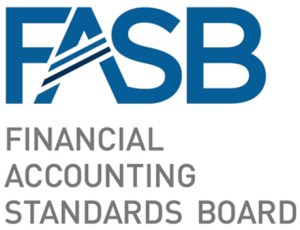Accounting
FASB Not-for-Profit Advisory Committee Meeting Recap
The FASB Not-for-Profit Advisory Committee (the Committee) held its semiannual meeting on September 10, 2020. Due to the COVID-19 pandemic, the meeting was held via video conference.
Sep. 23, 2020

The FASB Not-for-Profit Advisory Committee (the Committee) held its semiannual meeting on September 10, 2020. Due to the COVID-19 pandemic, the meeting was held via video conference. Topics discussed included:
Current Financial Reporting Issues—COVID-19-Related Matters—Members of the ad hoc COVID-19 Subcommittee provided an update on the Subcommittee’s activities, which had consisted of monthly meetings with FASB Board and staff members in May, June, and July. Discussions focused primarily on accounting and reporting of various CARES Act programs, including the Higher Education Emergency Relief Fund (HEERF), the Paycheck Protection Program (PPP), and the Healthcare Provider Relief Funds (HCPRF).
For the HCPRF, the Committee discussed the specific ambiguities that currently exist around the guidelines for “lost revenues” eligible for reimbursement. There was also some discussion about the analogizing being done by some stakeholders to the “first dollar”/ “deemed spent” guidance in GAAP for satisfaction of restrictions in determining whether barriers to entitlement (and thus, conditions) are substantially met in a particular period under the not-for-profit conditional contribution/grant model in Subtopic 958-605 for some of the CARES Act programs.
The Committee discussed the importance of good disclosure to help financial statement users understand the judgments being made by management in the face of the various uncertainties. Committee members also discussed the potential need for educational materials related to COVID-19 financial reporting implications, including a potential educational webcast, and indicated that the FASB should continue to monitor the situation.
Initial Post-Implementation Discussion of ASU 2016-14 (Presentation of Financial Statements of Not-for-Profit Entities)—Committee members discussed the implementation of Update 2016-14, providing feedback to the FASB members and staff regarding the experience and results of implementing the standard. Committee members discussed the costs and benefits experienced in practice versus the costs and benefits the Board expected when issuing the ASU. Committee members indicated that the implementation experience was generally positive, the standard has been well-received, and has generally resulted in better, more transparent financial information for users (including governing boards).
Factors contributing to an effective implementation included: the long implementation period, together with the ASU being well-publicized, allowed for a significant number of early adopters from which other NFPs could learn; considerable educational guidance from the FASB staff, the AICPA, CPE providers, and various firms; and a good deal of preparation of management teams and audit committees. Members indicated that the costs incurred to implement the standard were often less than initially anticipated and typically didn’t involve significant changes to systems; also, the costs were largely of a nonrecurring nature. Most Committee members noted that the information needed to implement ASU 2016-14 was generally readily available, and that the most challenging aspect of implementing the standard was the additional liquidity disclosure.
They noted that the information provided by that disclosure will likely continue to evolve as more entities adopt best practices learned from other NFPs and refine their own approaches, but that it should prove to be especially useful in the current pandemic environment. Many NFPs also took the opportunity to revisit, streamline, and otherwise improve the information in their other notes. This has been a key benefit to the users of their statements. Some Committee members noted that certain information about endowment corpus, previously provided through a separate, permanently restricted net asset class, is now being provided, with better labeling, by many higher education and other NFPs in the notes to the financial statements.
Update on Not-for-Profit Reporting of Gifts-in-Kind—FASB staff provided an update on the recently completed ASU 2020-07, which was subsequently issued on Thursday, September 17th. This update focused on changes made since the Exposure Draft. Committee members provided feedback to FASB staff on how to educate NFP stakeholders on the new ASU. They suggested that the ASU be publicized through various speeches at conferences and other venues and also emphasized the benefit of a potential FASB webcast. One member suggested also hosting a virtual roundtable next year with some larger NFP entities to ease implementation and answer questions that may arise.
Additionally, Committee members provided feedback on potential additional educational materials on the valuation of gifts-in-kind. Notably, members saw value in a potential FASB Staff Q&A document to remind stakeholders of the existing FASB and AICPA guidance and perhaps provide some additional examples. The participating observer from NASCO indicated her organization’s willingness to assist in bringing awareness to the ASU and in reviewing and bringing awareness to any additional education guidance on valuation. Implementation of Major/Other Updates—FASB staff provided an update on implementation of major projects including Topic 842, Leases, and Accounting Standards Update No. 2018-08, Not-for-Profit Entities (Topic 958): Clarifying the Scope and the Accounting Guidance for Contributions Received and Contributions Made.
Other Projects in Progress—FASB staff provided an update on the Identifiable Intangible Assets and Subsequent Accounting for Goodwill, Balance Sheet Classification of Debt, and Conceptual Framework—Elements projects. The AICPA’s participating observer provided a brief update on the AICPA’s project on digital assets.
International NFP Reporting Issues—FASB staff also provided an update on the International Financial Reporting for Nonprofit Organizations (IFR4NPO) initiative, noting the upcoming Public Consultation document to be issued in January 2021.
